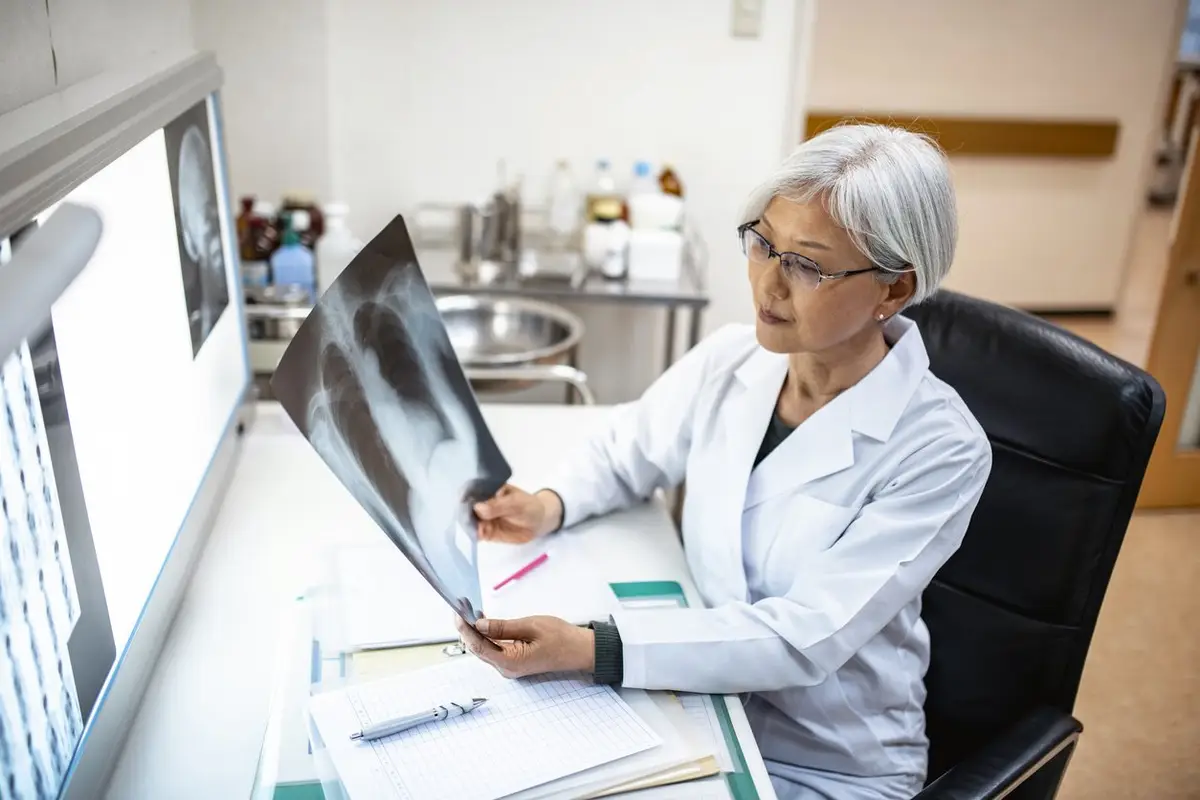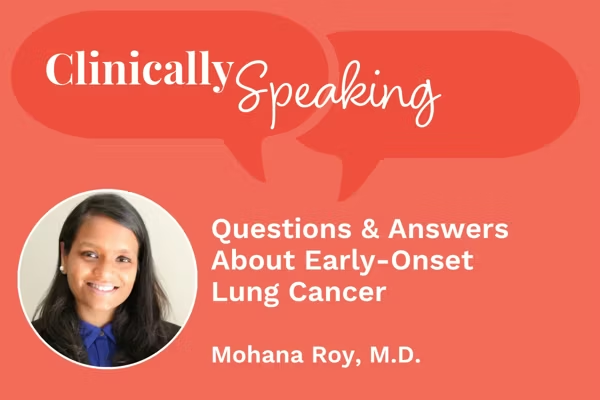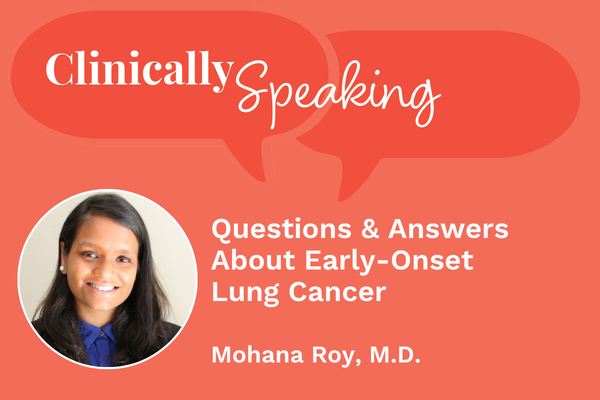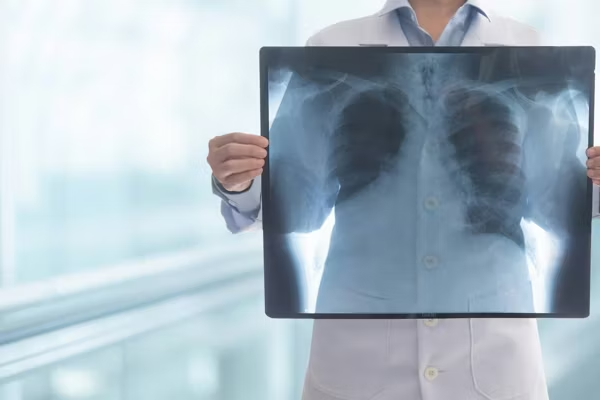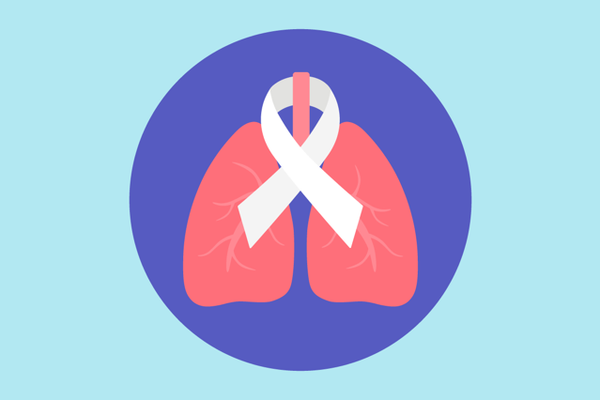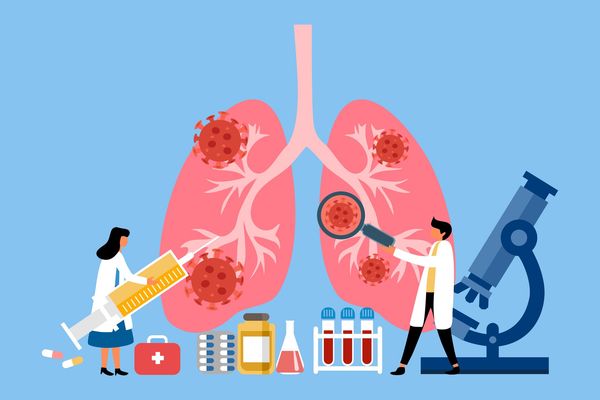Dusty Donaldson had a “tickle” in her throat and a mildly swollen lymph node in her neck. Her symptoms were initially dismissed by her doctor, but she knew something was wrong. She pushed for an answer, and after multiple tests, was diagnosed with lung cancer.
As an 18-year survivor of lung cancer, she counts herself among the lucky ones and now is a passionate advocate of early screening for lung cancer — an option that didn’t exist back when she was diagnosed in 2005.
“I realized right away the need for advocacy in the lung cancer space because it has such a high mortality rate and there’s a stigma associated with the disease,” she said.
Lung cancer kills more women than any other cancer in the United States. About 164 women die each day and 130,000 people die each year from the disease.
“While it’s not the most common type of cancer, it’s the No. 1 killer for both men and women,” said Jennifer Duke, M.D., a pulmonologist and interventional pulmonology fellow at Vanderbilt University. “One of the reasons why the disease is so fatal is that patients often go for a substantial period of time without developing symptoms. Lung cancer can hang out in the lung tissue and grow and grow, and by the time patients do develop symptoms — things like cough, shortness of breath, coughing up blood, weight loss — we find that these cancers are often quite advanced at the time of diagnosis.”
That’s where early screening for lung cancer can make a difference: helping people get an early diagnosis and potentially prolonging lives.
Read: Lung Cancer Kills an Alarming Number of Women — But There’s Hope >>
“If you catch lung cancer or certain types of lung cancer when it’s early and localized, your survival rate may be about 60% at five years,” Duke explained. “That may not sound great, but those patients who are diagnosed with late-stage disease, specifically metastatic disease, are looking at about a 6% survival rate.”
What is early screening for lung cancer?
Early screening for lung cancer involves a low-dose CT scan, which is a special type of X-ray that gives off a low dose of radiation to take detailed images of areas inside your body. The images are knitted together by a computer, providing a 3D view of your organs. Patients lie on a table that moves in and out of the machine as images are captured.
“We don’t use any dyes or injectables, and you don’t have to drink anything to prepare,” Duke said. “You lie on a table and usually within a matter of a few minutes, the low-dose CT scan is complete and images get sent to a radiologist, who then reads it to see if there are any issues such as small nodules or enlarged lymph nodes or anything that could look abnormal.”
If the images are clean, annual screening is recommended. If there’s something concerning in the images, the person may need more scans or a biopsy.
Early screening with a low-dose CT scan can literally be a lifesaver. The National Lung Screening Trial, which included 50,000 participants, found that people who received low-dose CT scans had a 15% to 20% lower risk of dying from lung cancer that people who just received regular X-rays.
“The low-dose CT scan is painless, it’s easy, and quicker than almost every other kind of cancer screening,” said Donaldson,who runs LiveLung, a nonprofit that advocates for lung cancer awareness and promotes early detection and compassion for people affected by lung cancer.
Who qualifies for early screening for lung cancer?
Currently, guidelines created by the U.S. Preventive Services Task Force recommend early screening for people ages 50 to 80 who currently smoke or quit within the past 15 years and have at least a 20 pack-year smoking history.
“We multiply how many years people have smoked with how many packs per day they smoked,” Duke explained. “So if you’ve smoked 2 packs a day for 10 years, that would be a 20 pack-year smoking history.”
Many insurance plans and Medicare will cover the cost of early screening for patients who meet the high-risk eligibility criteria. Despite this, only about 2 out of 10 eligible people get early screening for lung cancer.
“It’s an awareness issue,” said Donaldson. “People just don’t know about it.”
And because of the stigma surrounding smokers and lung cancer, smokers may avoid the topic for fear of being judged about their habit. Donaldson advises loved ones of those who are high-risk to alert them about early screening.
“By simply telling someone about screening, you’re actually throwing them a lifeline instead of just nagging or condemning someone for having a history of smoking or for being a current smoker,” she said.
Barriers to early screening
The Centers for Disease Control and Prevention (CDC) estimates that as many as 2 out of 10 of lung cancer diagnoses in the United States — or 20,000 to 40,000 per year — involve non-smokers or people who have smoked fewer than 100 cigarettes over their lifetime. And one study suggests that the number is increasing.
This begs the question: How do people who are not high-risk get early screening when they are not eligible? Healthcare Providers (HCPs) may be resistant to suggesting screening for people who are not high-risk, even if they have some symptoms. While studies are being done on the rising rate of non-smokers with lung cancer, it may be a long time before there are changes to the eligibility recommendations.
Read: I Never Smoked and Got Lung Cancer >>
Talk to your HCP about any other risk factors, such as second-hand smoke, exposure to radon, air pollution, a family history of lung cancer, and if you’ve served in the military or held other jobs that may have exposed you to asbestos.
“It’s important to recognize that these recommendations are in place to benefit the largest number of people possible in the largest health benefit way,” Duke said. “So just because someone doesn’t meet high-risk criteria doesn’t necessarily mean that their concerns aren’t real and important.”
People who are not high-risk may still get some insurance coverage for early screening, but they may also have to shell out a hefty sum out of pocket. It’s important to discuss your options with your HCP.
If your HCP isn’t hearing your concerns or you just want another perspective, seek out a second opinion. Ask for a referral to a lung specialist or search for one on your own. Just make sure ahead of time that they take your insurance.
Advocating for early screening is something Donaldson preaches to others. And it’s also something she thinks about when she looks back on her own lung cancer journey. She would not have been eligible even if early screening existed when she was diagnosed because she had quit smoking 26 years prior.
“If you have symptoms and are concerned, whether or not you fit the guidelines, don’t take no for an answer,” she said.
This resource was created with support from Daiichi Sankyo and Merck.
- Lung Cancer 101 ›
- Lung Cancer Hub - HealthyWomen ›
- Preventive Health Screenings for Women ›
- Lung Cancer Kills an Alarming Number of Women — But There’s Hope ›
- Understanding the Different Types of Lung Cancer - HealthyWomen ›
- Entender los varios tipos de cáncer de pulmón - HealthyWomen ›
- CAT Scan Radiation - HealthyWomen ›
- Desigualdades raciales en las examinaciones de cáncer de pulmón - HealthyWomen ›
- Racial Disparities in Lung Cancer Screening - HealthyWomen ›
- Lung Cancer Screening 101 - HealthyWomen ›
- Introducción a las pruebas de cáncer pulmonar - HealthyWomen ›
- Facts About Lung Cancer Treatments - HealthyWomen ›
- Información acerca de los tratamientos de cáncer pulmonar - HealthyWomen ›
- Facts About Lung Cancer Screening - HealthyWomen ›
- Información comprobada acerca de las pruebas de cáncer pulmonar - HealthyWomen ›

